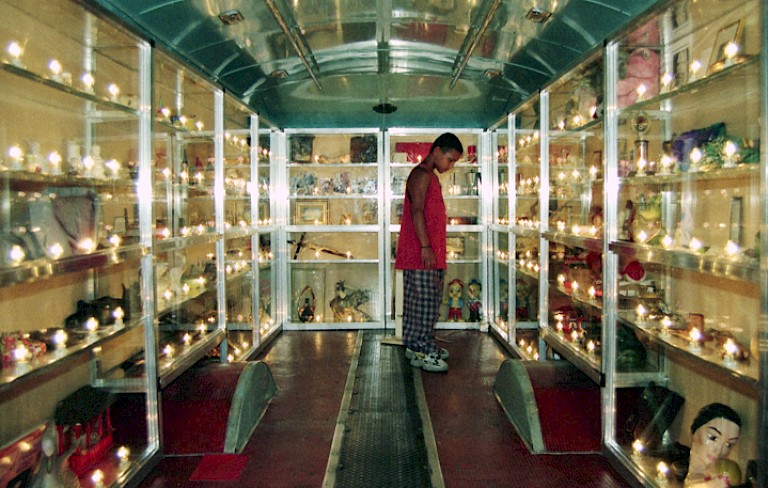January 21, Participatory Witnessing: MemoLab, Objects of Memory

Through the readings, we will contemplate how community approaches to memory and justice foster empathetic engagement and participatory witnessing through the affective memory of objects and place. In addition to the readings, please prepare for our first MemoLab—an experimental learning approach in which we will build an empathetic space and consider the concept of participatory witnessing in practice.
Memolab 1 – Objects of memory | Bring an object(s) (a letter, heirloom, article of clothing, household object, a medal etc.) that carries memory of a significant event to you/your family to class and connect it to broader discussions of the readings on memory and justice struggles.
Consider the following questions for the activity: How does personal memory serve different purposes? How is your object(s) connected to broader political struggles or histories of erasure/silencing, and does it communicate desires for a different future? What does your object tell us about your history/identity and how it exists in relation to the histories/identities of other people? What emotions does it elicit for you? What does it make you remember? What do you not remember?
Please only bring something you are comfortable sharing with the rest of class. It does not have to be personal in the sense that it reveals something you are not prepared to explore/share, but it could be something symbolic that tells us about a connection you have to a person(s), place(s) or another object(s) that holds significance. For instance, the Greek flag is rich with symbolism of their struggle for Independence. The 13 blue bars represent the 13 letters of Eleftheria i Thanatos, the Greek Motto which translates to “Freedom or Death,” originating in a resistance song from the 1900s. What is the meaning of a flag to collective memory and meaning-making?
Readings
- Johanna Mannergren Selimovic, The Stuff from the Siege: Transitional Justice and the Power of Everyday Objects in Museums, International Journal of Transitional Justice, Volume 16, Issue 2, July 2022, Pages 220–234, https://doi.org/10.1093/ijtj/ijac002
- Yang, E. (2023). Collectivizing justice: Participatory witnessing, sense memory, and emotional communities. Memory Studies, 16(3), 621–635. https://doi.org/10.1177/17506980231162328
-
Schindel, Estela. “‘Now the Neighbors Lose Their Fear’: Restoring the Social Network around Former Sites of Terror in Argentina.” International journal of transitional justice 6.3 (2012): 467-485.
- explore: War Childhood Museum or AMA y No Olvida, Museum of Memory Against Impunity or Feldman, Ilana. “Murmurs of Presence in Objects of Absence.” Comparative Studies of South Asia, Africa and the Middle East 44.2 (2024): 352-361
Further Reading
- Asavei, Maria Alina. ‘The art and politics of imagination: remembering mass violence against women.’ Critical Review of International Social and Political Philosophy 22.5 (2019): 618-636.
- Brown, Kris, ‘“What It Was Like to Live through a Day”: Transitional Justice and the Memory of the Everyday in a Divided Society,’ The International Journal of Transitional Justice 6(3) (2012): 444–466
- Feldman, Ilana. “Murmurs of Presence in Objects of Absence.” Comparative Studies of South Asia, Africa and the Middle East 44.2 (2024): 352-361.
- Ruiz Romero, Gabriel. “Voices around us: memory and community empowerment in reconstruction efforts in Colombia.” International journal of transitional justice 6.3 (2012): 547-557.
- Saad, Dima. “Materializing Palestinian memory: Objects of home and the everyday eternities of exile.” Jerusalem Quarterly 80 (2019): 57.
- Riaño Alcalá, Pilar. Encounters with Memory and Mourning: Public Art as a Collective Pedagogy of Reconciliation. In Public Acts: Curriculum and Desires of Social Change. E.Meiners and F. Ibañez-Carrasco, eds. Pp.164-188. London: Routledge.
Presentation: AMA y No Olvida, Museum of Memory Against Impunity OR Ai Wei Wei, collective works to remember the 2008 Sichuan Earthquake (backpacks, citizen projects etc) OR The zip Code Project
Photo: https://www.instituteforpublicart.org/case-studies/the-skin-of-memory/